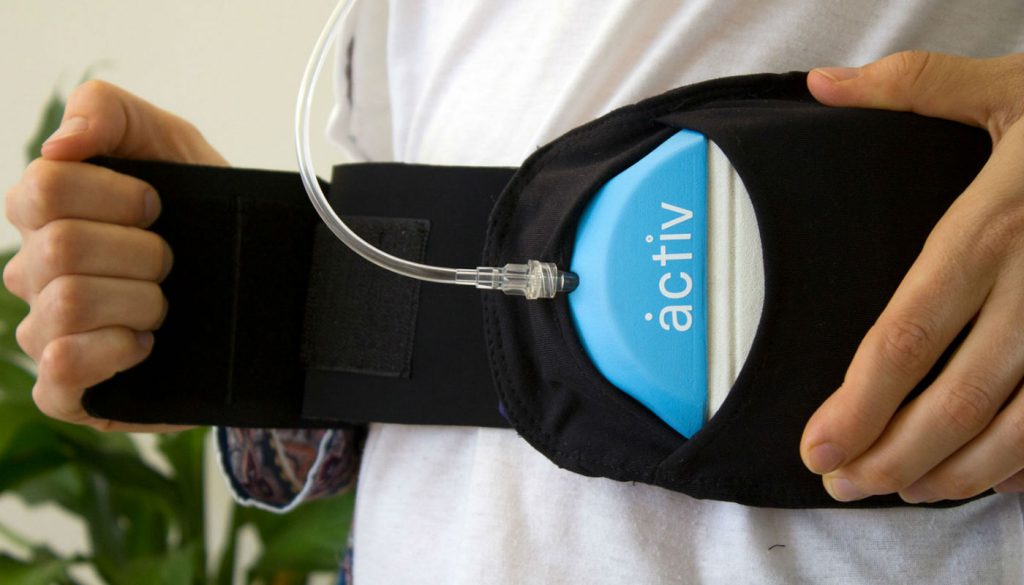When William Mason set out to redesign chemotherapy pumps, he made it a point to keep the end user at the heart of the process.
As the saying goes, necessity is the mother of invention. That oft-repeated proverb was certainly true for industrial design student William Mason, whose experiences living with a family member dealing with a cancer diagnosis inspired him to redesign chemotherapy infusion pumps.
His prototype for a pump designed to improve the quality of life for chemotherapy outpatients recently won the Dyson Australia National Award.
Human-centred approach
Like many chemotherapy outpatients, Mason’s family member’s chemotherapy was administered by a traditional pump. While these pumps allow patients to receive treatment in the comfort of their home, they can be cumbersome, creating additional difficulties during an already challenging time. Daily tasks such as showering can be especially complicated.
“I just saw that he was having a lot of trouble with the treatment and with this thing that he had to carry around with him, and I just thought maybe there’s a way I can do it better. Maybe I can come up with an idea that’s better than what’s out there already,” Mason said.
The result was an elastomeric infusion pump, which administers medication with an elastic bladder instead of batteries.
“This is technology that’s on the market already, but they’re all quite bulky and not very subtle or discreet,” Mason said.
“What sets the Activ Pump apart is its human-centric design approach. It’s looking at the activities people are doing and what rituals they are doing in the three to four days they are connected to the device and designing from that. How can we make the product fit within their lifestyle?”
To achieve these ends, Mason also created two additional products, designed to be used with the pump: the Activ Carry Bag and the Activ Shower Bag. The Carry Bag, William explained, “can be worn under or over the patient’s clothes, concealing the pump”.
The Activ Shower Bag.As the name implies, the Shower Bag serves the much needed function of allowing patients to shower while wearing the infusion pump.
“The Activ Shower Bag mounts via a suction cup or hangs in the patient’s shower, adapting to whatever is needed. The shower bag incorporates a neoprene mesh, which was cut in a three-point star pattern to allow rotational deformation when stretched around the pump, which firmly secures the pump while showering.”
Foreign territory
But, Mason said, it wasn’t just “a Eureka moment”.
As an industrial designer with a background in furniture design, the practicalities of designing medical equipment were foreign to Mason.
“Just working with textiles is very foreign as an industrial designer, but using the design-thinking process is the underlying thing that helps you get through that problem,” he said.
“Also, trying to figure out how the actual infusion pumps work. I basically had to reverse engineer – just from drawings – the design for this one, so it was very challenging.”
Fortunately, he was able to draw on some of the expertise available to him through QUT.
“I was able to use some of the contacts at QUT to speak with medical professionals to see how they treat chemotherapy outpatients locally, how they do it and what’s their process, so that was quite insightful.”
Research was also complicated because of the sensitive nature of the subject matter and the high stakes of correctly administering treatment.
“The whole topic is very challenging, particularly having a family member go through it. The more you research the more difficult you realise it is,” Mason said.
“I mostly talked to ex-patients rather than people who were going through it at the time, which was actually really beneficial because they can look at it after having reflected on their experience.”
Bitten by the bug
William Mason.Since finishing university Mason has been working in a design consultancy, which he said has been beneficial.
“As a graduate I have loads to learn. The design consultancy that I’m at, you get loads of projects so that’s really beneficial as I develop into an experienced industrial designer.”
But he remains interested in developing the Activ Pump, as well as other healthcare products.
“It’s much more meaningful, I think, working with healthcare products. That’s what I’d like to do in the future.”
The worldwide winner was announced in late October, and went to a team of bioengineers from McMaster University in Ontario, Canada for their low-cost, non-invasive melanoma detector.
